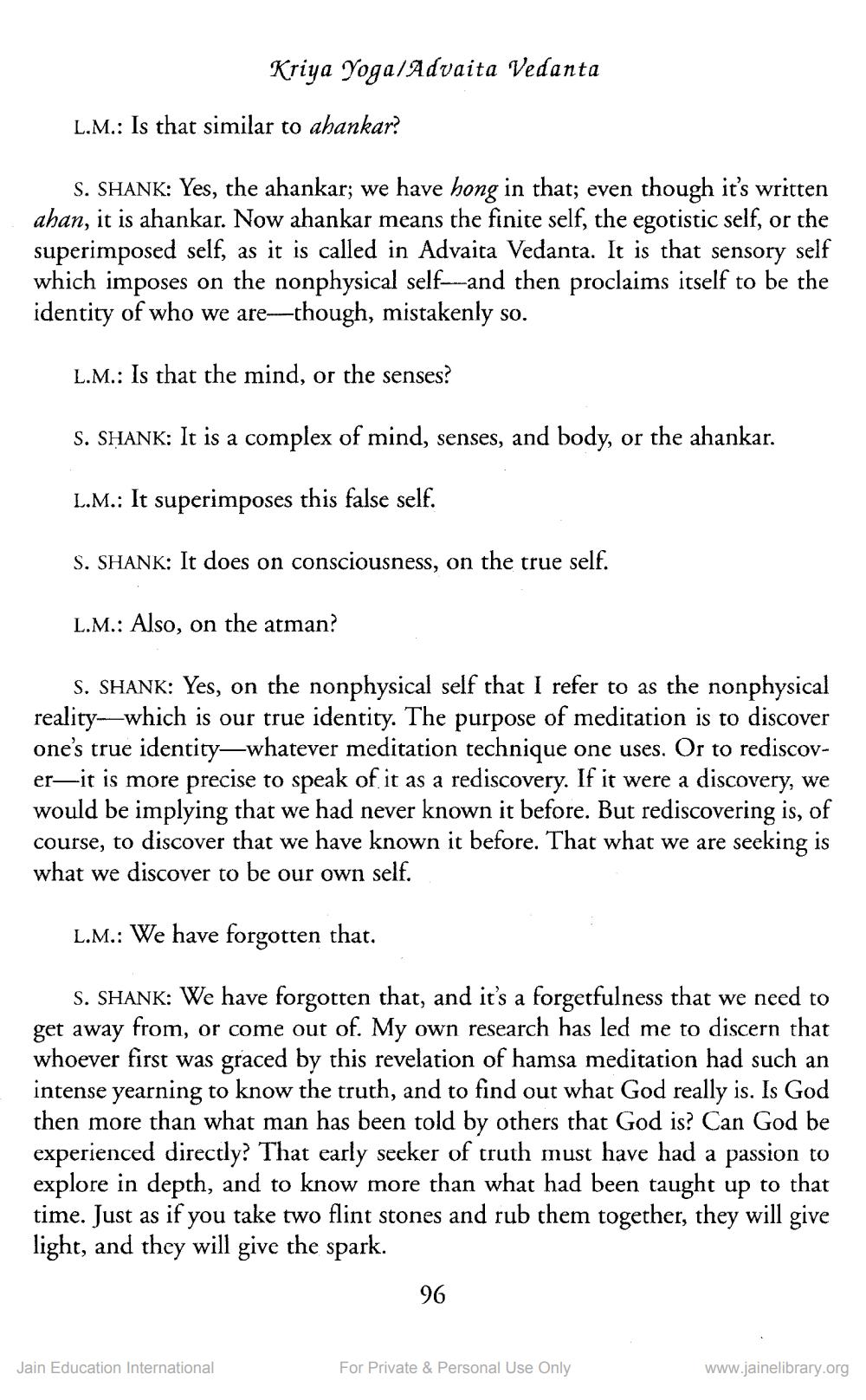________________
Kriya Yoga/Advaita Vedanta
L.M.: Is that similar to ahankar?
S. SHANK: Yes, the ahankar; we have hong in that; even though it's written ahan, it is ahankar. Now ahankar means the finite self, the egotistic self, or the superimposed self, as it is called in Advaita Vedanta. It is that sensory self which imposes on the nonphysical self—and then proclaims itself to be the identity of who we are—though, mistakenly so.
L.M.: Is that the mind, or the senses?
S. SHANK: It is a complex of mind, senses, and body, or the ahankar.
L.M.: It superimposes this false self.
S. SHANK: It does on consciousness, on the true self.
L.M.: Also, on the atman?
S. SHANK: Yes, on the nonphysical self that I refer to as the nonphysical reality—which is our true identity. The purpose of meditation is to discover one's true identity—whatever meditation technique one uses. Or to rediscover-it is more precise to speak of it as a rediscovery. If it were a discovery, we would be implying that we had never known it before. But rediscovering is, of course, to discover that we have known it before. That what we are seeking is what we discover to be our own self.
L.M.: We have forgotten that.
S. SHANK: We have forgotten that, and it's a forgetfulness that we need to get away from, or come out of. My own research has led me to discern that whoever first was graced by this revelation of hamsa meditation had such an intense yearning to know the truth, and to find out what God really is. Is God then more than what man has been told by others that God is? Can God be experienced directly? That early seeker of truth must have had a passion to explore in depth, and to know more than what had been taught up to that time. Just as if you take two flint stones and rub them together, they will give light, and they will give the spark.
96
Jain Education International
For Private & Personal Use Only
www.jainelibrary.org




